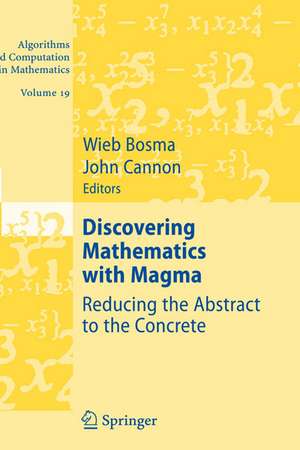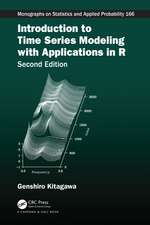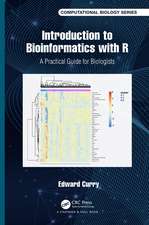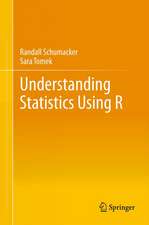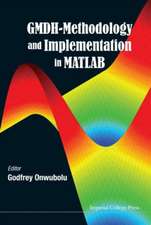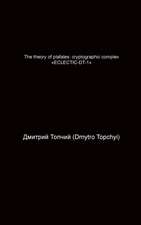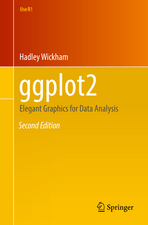Discovering Mathematics with Magma: Reducing the Abstract to the Concrete: Algorithms and Computation in Mathematics, cartea 19
Editat de Wieb Bosma, John Cannonen Limba Engleză Hardback – 23 oct 2006
| Toate formatele și edițiile | Preț | Express |
|---|---|---|
| Paperback (1) | 650.59 lei 6-8 săpt. | |
| Springer Berlin, Heidelberg – 30 noi 2010 | 650.59 lei 6-8 săpt. | |
| Hardback (1) | 656.36 lei 6-8 săpt. | |
| Springer Berlin, Heidelberg – 23 oct 2006 | 656.36 lei 6-8 săpt. |
Din seria Algorithms and Computation in Mathematics
- 15%
 Preț: 671.14 lei
Preț: 671.14 lei - 18%
 Preț: 728.91 lei
Preț: 728.91 lei - 15%
 Preț: 602.42 lei
Preț: 602.42 lei -
 Preț: 488.92 lei
Preț: 488.92 lei - 15%
 Preț: 643.00 lei
Preț: 643.00 lei -
 Preț: 405.06 lei
Preț: 405.06 lei -
 Preț: 402.00 lei
Preț: 402.00 lei - 18%
 Preț: 738.69 lei
Preț: 738.69 lei -
 Preț: 397.97 lei
Preț: 397.97 lei - 18%
 Preț: 1121.13 lei
Preț: 1121.13 lei - 15%
 Preț: 497.22 lei
Preț: 497.22 lei - 15%
 Preț: 479.22 lei
Preț: 479.22 lei -
 Preț: 397.38 lei
Preț: 397.38 lei - 15%
 Preț: 591.14 lei
Preț: 591.14 lei -
 Preț: 393.35 lei
Preț: 393.35 lei - 20%
 Preț: 330.42 lei
Preț: 330.42 lei - 18%
 Preț: 962.35 lei
Preț: 962.35 lei - 23%
 Preț: 638.32 lei
Preț: 638.32 lei - 15%
 Preț: 596.55 lei
Preț: 596.55 lei -
 Preț: 398.15 lei
Preț: 398.15 lei - 18%
 Preț: 786.98 lei
Preț: 786.98 lei - 15%
 Preț: 701.06 lei
Preț: 701.06 lei - 18%
 Preț: 756.99 lei
Preț: 756.99 lei - 20%
 Preț: 1153.97 lei
Preț: 1153.97 lei - 18%
 Preț: 965.52 lei
Preț: 965.52 lei - 20%
 Preț: 341.48 lei
Preț: 341.48 lei -
 Preț: 499.24 lei
Preț: 499.24 lei
Preț: 656.36 lei
Preț vechi: 820.45 lei
-20% Nou
Puncte Express: 985
Preț estimativ în valută:
125.61€ • 130.39$ • 104.74£
125.61€ • 130.39$ • 104.74£
Carte tipărită la comandă
Livrare economică 24 martie-07 aprilie
Preluare comenzi: 021 569.72.76
Specificații
ISBN-13: 9783540376323
ISBN-10: 3540376321
Pagini: 404
Ilustrații: XXIV, 364 p.
Dimensiuni: 155 x 235 x 27 mm
Greutate: 0.72 kg
Ediția:2006
Editura: Springer Berlin, Heidelberg
Colecția Springer
Seria Algorithms and Computation in Mathematics
Locul publicării:Berlin, Heidelberg, Germany
ISBN-10: 3540376321
Pagini: 404
Ilustrații: XXIV, 364 p.
Dimensiuni: 155 x 235 x 27 mm
Greutate: 0.72 kg
Ediția:2006
Editura: Springer Berlin, Heidelberg
Colecția Springer
Seria Algorithms and Computation in Mathematics
Locul publicării:Berlin, Heidelberg, Germany
Public țintă
ResearchCuprins
Some computational experiments in number theory.- Applications of the class field theory of global fields.- Some ternary Diophantine equations of signature (n, n, 2).- Studying the Birch and Swinnerton-Dyer conjecture for modular abelian varieties using Magma.- Computing with the analytic Jacobian of a genus 2 curve.- Graded rings and special K3 surfaces.- Constructing the split octonions.- Support varieties for modules.- When is projectivity detected on subalgebras?.- Cohomology and group extensions in Magma.- Computing the primitive permutation groups of degree less than 1000.- Computer aided discovery of a fast algorithm for testing conjugacy in braid groups.- Searching for linear codes with large minimum distance.- Colouring planar graphs.- Appendix: The Magma language.
Notă biografică
Cannon:
1) Principal designer of the Magma system
2) Extensive contributions to the field of group theory algorithms
3) Awards:
Bosma: co-designer of Magma, active in computational number theory and computer algebra
1) Principal designer of the Magma system
2) Extensive contributions to the field of group theory algorithms
3) Awards:
- 1993 CSIRO Medal (for Computer Algebra)
- 2001 ATSE Clunies Ross Award (for Cryptography and Computer Algebra)
- 2006 Richard D. Jenks Memorial Prize for Excellence in Software Engineering Applied to Computer Algebra.
Bosma: co-designer of Magma, active in computational number theory and computer algebra
Textul de pe ultima copertă
This volume celebrates the first decade of the Computer Algebra system Magma. With a design based on the ontology and semantics of algebra, Magma enables users to rapidly formulate and perform calculations in the more abstract parts of mathematics. This book introduces the reader to the role Magma plays in advanced mathematical research through 14 case studies which, in most cases, describe computations underpinning new theoretical results. The authors of the chapters were chosen both for their expertise in the particular field and for their innovative use of Magma. Although by no means exhaustive, the topics range over much of Magma's coverage of algorithmic algebra: from number theory and algebraic geometry, via representation theory and group theory to some branches of discrete mathematics and graph theory. A basic introduction to the Magma language is given in an appendix. The book is simultaneously an invitation to learn a new programming language in the context of contemporary research problems, and an exposition of the types of problem that can be investigated using computational algebra.
Caracteristici
First book on the well-known MAGMA symbolic computation system
